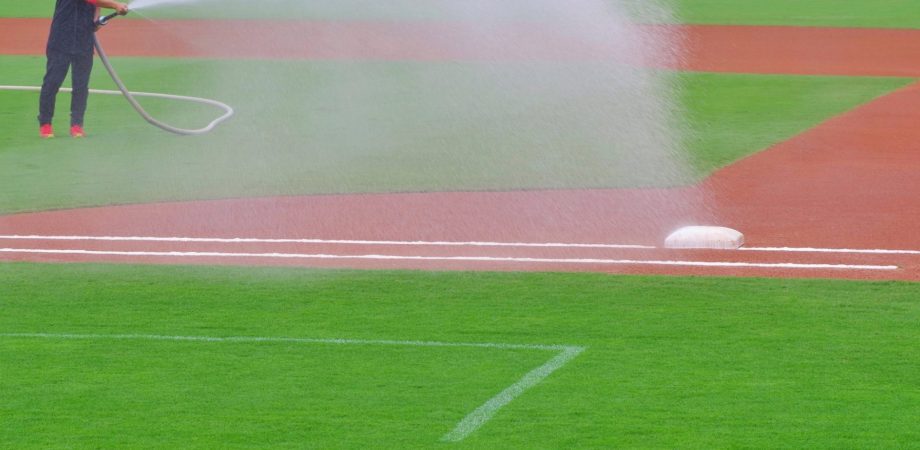Don’t Forget to Hydrate

Hydrating the infield does much more than just make it look tidy. A well-hydrated infield has better playability and is safer, as it cushions the impact from running and sliding. It also helps protect players from bad hops. And while dust control is good for aesthetics, it’s also good for the lungs of players and fans in close proximity to the field. Because clay is an expansive soil, it requires consistent hydration to maintain the right level of moisture for play.
There are several ways to check the moisture level of your infield. Having spent countless hours on it, you can probably tell from the infield skin’s color if it needs water. For a more accurate analysis, though, you’ll want to get below the surface. A portable moisture meter lets you take precise measurements of multiple spots on the infield to understand how much to water, and where. Once you’ve answered those questions, the next thing to consider is when to water.
Timing is everything when it comes to hydrating the infield. There’s no one-size-fits-all hydration schedule because each field has unique needs based on game and practice schedules, but there are some best practices for every field manager to follow. One is to do a heavy watering after games or practices. If your field is used daily, this would be the last thing to happen every night. A heavy watering should saturate the depth of the infield mix to compact it into a firm playing surface for the next day. On gameday itself, you should start light waterings at least eight hours before the first pitch to manage traction and dust for players. Be prepared to adjust your hydration plan based on the weather, and monitor moisture levels throughout the day to ensure a perfect infield for game time.
Finally, don’t underestimate the importance of the infield mix itself when it comes to hydration. The composition of the infield controls the effectiveness of watering, so incorporating a soil conditioner maximizes your hydration program. For example, In-Flow is a granular conditioner and surfactant that improves water’s ability to flow into and throughout the profile of the infield skin. This kind of conditioner can help you find the perfect balance between water retention and movement, resulting in a better-performing field for a longer period of time.







